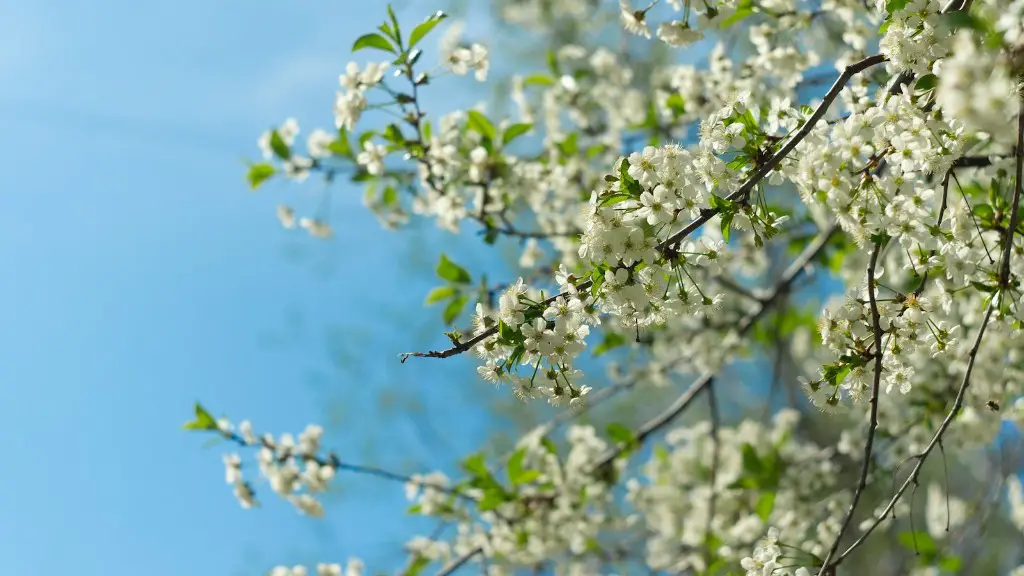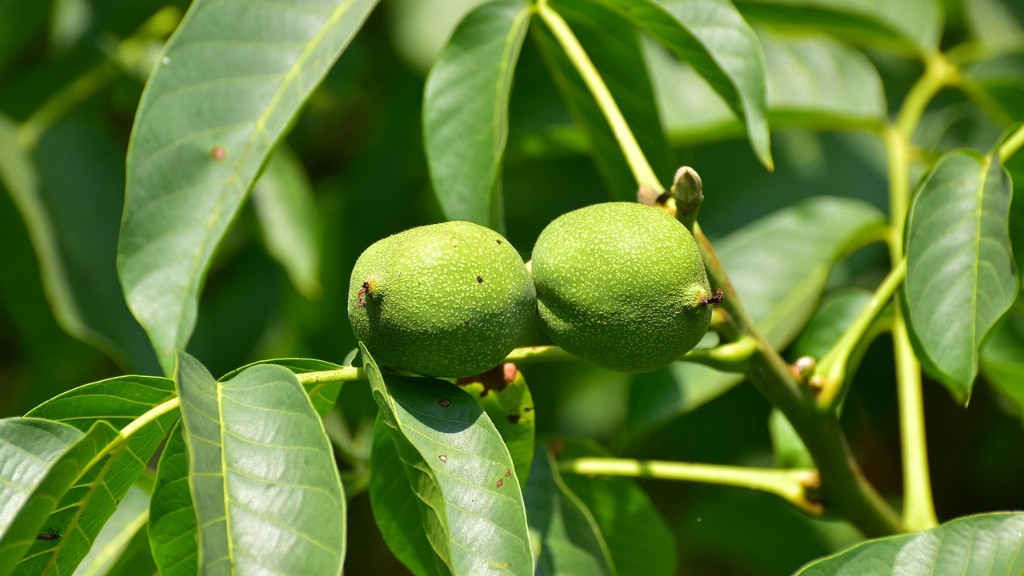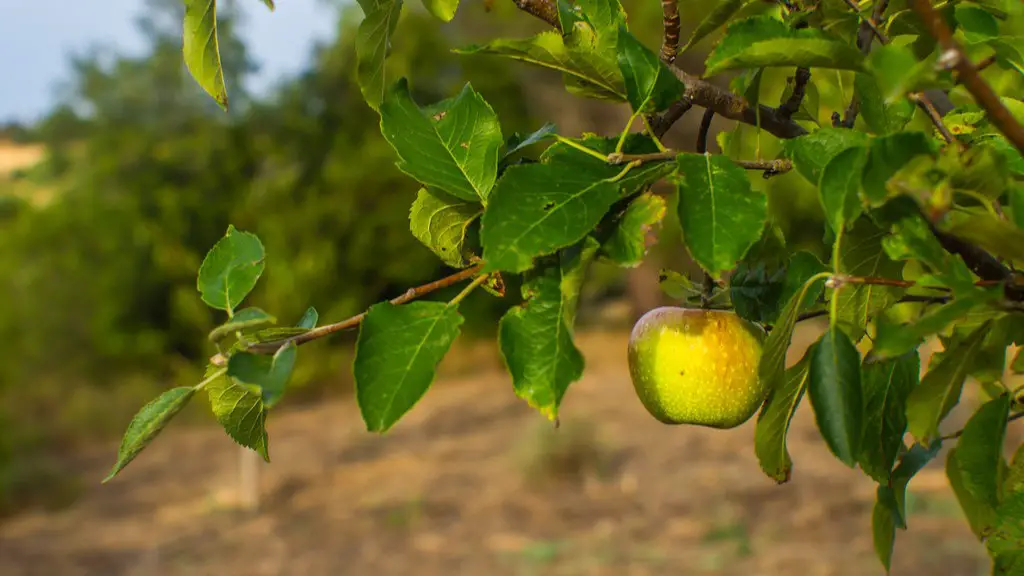When pruning a small apple tree, it’s important to do it correctly in order to maintain its health and promote healthy fruit production. The following steps provide an overview of the pruning process.
Start by removing dead, diseased, or damaged limbs. This should always be the first step when pruning any tree. Make sure to cut any crossed branches near the trunk as well. Doing so will increase air and sunlight flow in the tree.
Remove suckers from around the base of the tree. These are small branches that form close to the trunk and should be removed as they will generally steal essential energy from the tree.
Thin out overcrowding in the canopy. Remove branches that are growing too close together or are growing too low on the tree. This will promote airflow and sunlight inside the canopy and can prevent future issues such as disease.
Cut back on overly vigorous growth. This is especially important if you want to control the size of the tree or are looking to encourage fruit production. Long, vigorous branches tend to produce fewer fruits, while short, pruned branches tend to produce more fruits.
Be sure to use the correct technique when cutting. Pruning should be done at an angle about ¼ inch above a bud and should be done with a sharp pruning tool. Make sure that cuts are made cleanly and without damaging the bark of the tree.
Finally, check to make sure that you have pruned the tree correctly. Take a look at the overall shape of the tree and make sure it looks balanced. Make sure there are no branches growing inwards or outwards that could cause future issues.
Pruning For Tree Health
When pruning a small apple tree, it’s important to do it correctly in order to maintain its health. Remove any dead, diseased, and damaged limbs first, in addition to any crossed branches near the trunk. This will help increase air and sunlight flow within the tree, aiding in its overall health. Removing suckers from around the base of the tree is also important as these branches tend to steal essential energy from the tree.
When pruning a small apple tree, it’s important to thin out overcrowding in the canopy. This can be done by removing any branches that are growing too close together or too low on the tree. By doing this, it can help promote airflow and sunlight in the canopy, reducing the risk of future disease.
Additionally, cutting back overly vigorous growth can help with maintaining tree health. Long and vigorous branches will typically produce fewer fruits, so pruning back these branches to a reasonable size can help promote healthy fruit production. Make sure to use the correct technique when cutting. Pruning should be done at an angle about ¼ inch above a bud and with a sharp pruning tool to ensure that the cut is clean and without damaging the bark of the tree.
Finally, make sure to check the overall shape of the tree after pruning. Taking a good look at the tree can help you identify any branches growing inwards or outwards that could cause future issues. This extra step can help ensure that the tree is healthy and free of disease.
Maintenance After Pruning
After pruning a small apple tree, there are a few important steps to follow in order to ensure that the tree remains healthy. The first step is to make sure to remove any pruned debris from the ground around the tree. This debris can harbor disease and pests, so it’s important to remove it from the area.
After removing all the debris, it’s important to apply a protective mulch to the soil around the tree. The mulch should be about 3 to 6 inches thick depending on the type of mulch you’re using, and can help preserve soil moisture, moderate soil temperature, and protect the roots from extreme weather conditions.
It’s also important to water the tree after pruning. Apple trees need plenty of water in order to stay healthy, so watering the tree regularly can help ensure that it will continue to thrive. Aim to water the tree right after pruning, and then make sure to water the tree around 2 inches per week during the dry season.
Fertilization is also important after pruning. A slow-release fertilizer can be used to provide the tree with essential nutrients that it needs in order to stay strong and healthy. Fertilize the tree around once per year, or every other year depending on how well the tree is growing.
Finally, it’s important to make sure that the tree is getting enough sunlight after pruning. Make sure that the tree is not getting too much shade from nearby buildings or trees. If it is, then prune the tree to allow for more sunlight to reach the branches.
Pruning For Better Fruit Production
When pruning a small apple tree, it can also be beneficial to prune the tree with fruit production in mind. Pruning back overly vigorous growth can help with this, as long, vigorous branches tend to produce fewer fruits. Pruning these branches back to a reasonable size can help promote more fruits being produced by the tree.
When pruning for fruit production, it’s important to make sure that you’re pruning at the correct time of year. Typically, apple trees should be pruned in late winter or early spring when the tree is still dormant. This is the best time to prune since the tree will not be in full bloom and the new growth will help the tree bear more fruits.
After pruning, it’s important to provide the tree with extra care. Watering and fertilizing the tree regularly can help ensure healthy fruit production. Additionally, making sure that the tree is getting enough sunlight can help as well. Ensure that the tree is not getting too much shade from a nearby building or tree and make adjustments if necessary.
Finally, be sure to check the tree often for any signs of disease or pests. Check for any discoloration, wilting, or yellowing of the leaves and take action if necessary. Regularly checking the tree can help ensure that the tree is healthy and can help prevent any issues from occurring.
Tools & Techniques for Pruning
When pruning a small apple tree, it’s important to use the correct tools and techniques in order to do it properly. The most common tools used for pruning are pruning shears, loppers, and pole pruners. Pruning shears are best for removing smaller branches, while loppers and pole pruners are best for working with larger branches.
In addition to using the correct tools, it’s also important to use the correct technique when pruning. Make sure to cut at an angle about ¼ inch above a bud and use a sharp pruning tool to make sure that the cut is clean and without damaging the bark of the tree. This will help ensure that the tree will remain healthy and free of disease.
When pruning a small apple tree, it’s also important to clean any tools after use. This will help reduce the risk of spreading disease and pests from one tree to the next. Make sure to use a damp cloth to clean the blades of the tools and then wipe them dry with a clean cloth.
Finally, when pruning a small apple tree be sure to wear the appropriate safety gear. This includes gloves and safety glasses to protect your hands and eyes from any dust or debris kicked up by the pruning. Pruning trees can be a dangerous activity, so make sure to take the necessary precautions when pruning any tree.




